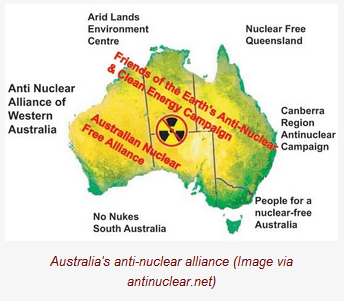 An informed democracy will behave in a responsible fashion, says Dr Helen Caldicott, however as we sleepwalk towards embracing nuclear energy, most Australians are not aware of the dangers and have forgotten the history.
An informed democracy will behave in a responsible fashion, says Dr Helen Caldicott, however as we sleepwalk towards embracing nuclear energy, most Australians are not aware of the dangers and have forgotten the history.
THE Australian anti-nuclear movement started in Adelaide in 1971 when fallout from French atmospheric nuclear tests polluted Adelaide’s water supply.
People were warned that strontium 90 concentrating in milk would further concentrate in childrens’ teeth and bones and years later could cause leukemia or bone cancer.
Australians, in general, were not enamoured of the French and were so incensed that they were polluting the southern hemisphere with their tests that a huge movement erupted. Spontaneous marches occurred in Adelaide streets, people stopped buying French wine and cheese, postal workers refused to deliver French mail and whole pages were devoted to indignant letters to the editor.
Within nine months 75 per cent of Australians fervently opposed the tests.
I then travelled to Paris with Deputy Prime Minister Jim Cairns and Ken Newcomb of the Australian Union of Students to inform the French Government of our opposition. Australia and New Zealand took France to the International Court of Justice and they were forced to test underground.
Despite this international victory, three years later Whitlam decided to mine and export uranium. I knew nothing about medical hazards of nuclear power until I read Poisoned Power by Gofman and Tamplin, who had been commissioned by the U.S. Atomic Energy Commission to research the dangers of nuclear power. I then travelled to Canberra to warn Whitlam of the medical dangers of the enterprise, but to no avail.
A group began in Adelaide called Campaign Against Nuclear Energy (CANE) and in Melbourne, Movement Against Uranium Mining (MAUM). Unions learned of the dangers and became so deeply concerned that, when a man refused to shunt a truck containing yellow cake in Brisbane, the Australian Railways Union called a 24-hour nationwide strike.
The medical dangers of uranium and nuclear power hit the headlines.
Finally, in 1978, the ACTU passed a resolution to ban uranium mining, transport and export, which lasted for five years until Bob Hawke introduced the Three mine policy, ending the ban.
The anti-nuclear movement in Australia was very powerful and prevailed for many years.
Ironically, an ardently pro-nuclear group in Adelaide has arisen, led partly by Barry Brook – a professor of climate change at Adelaide University – who is an adamant supporter of uranium mining and nuclear power in Australia and is promoting small modular reactors.
To make matters worse, former Prime Minister Bob Hawke is advocating that Australia enrich uranium and become the repository for the world’s nuclear waste.
Says Hawke:
“We would get an enormous stable flow of income which could be used for the benefit of the world and our own benefit.”
Nuclear waste must be isolated from the environment for one million years, according to the US Environmental Protection Agency — a scientific impossibility. These people clearly do not understand the carcinogenic and medical dangers arising at all stages of the nuclear fuel chain, nor do they understand radiobiology, genetics or teratology.
Furthermore, nuclear power does not alleviate global warming, because it is supported by a massive industrial infrastructure, creating large quantities of global warming gases including CO2 and CFCs. It is hugely expensive – $12-15 billion per new reactor – and, unable to gain funding from Wall Street, is hugely subsidised by the Government.
And, most importantly, investment in nuclear power would take money away from desperately needed renewable energy.
Each large reactor contains as much radiation as 1,000 Hiroshima bombs and uranium becomes one billion times more radioactive in a reactor, creating 200 new dangerous radioactive isotopes. Three major nuclear accidents – Three Mile Island, Chernobyl and Fukushima – all resulted from human fallibility. Chernobyl has already killed over one million and Fukushima, fueled by Australian uranium, will eventually kill thousands from cancer, leukemia, genetic disease and congenital malformations.
As President Jefferson once said:
“An informed democracy will behave in a responsible fashion.”
Sadly the Australian people are now relatively uninformed about the medical hazards of the whole nuclear fuel chain.
Originally published: http://www.independentaustralia.net/life/life-display/australia-sleepwalks-towards-a-dangerous-nuclear-future,6840

Dr. Caldicott,
I met you in Seattle in early 2012 and am grateful for you and all you do. However I take issue with a statement you made here. Fukushima will not only eventually kill thousands of people–it will kill billions over time, certainly hundreds of millions. I can’t prove it, but I can guarantee you it’s already killed far more people than Chernobyl in 3.5 years.
I know that experts like yourself seem to steer clear from the word “millions”, certainly “billions” when discussing Fukushima mortality, probably from concern over being labeled an extremist. We cannot continue though to walk that middle line. People need to know the truth. Fukushima is in every single person on earth. Every single person on earth’s life has been shortened. Billions of people will die from Fukushima over the next 100 years. It’s simple math. Have you read Fukushima Meltdown & Modern Radiation: Protecting Ourselves and Our Future Generations [Dr. John W. Apsley II]? He doesn’t go to the billions, but makes the most realistic prediction I’ve seen to date.
Again I thank you with all my heart for you and all you do.
Best regards,
Deron Kosoff
Corvallis, Oregon
Deron, I do disagree with you, the data is just coming in on thyroid cancer, this is an experiment in the making but the figures you quote are extreme
Helen
Hi Dr. Caldicott,
Thank you for the response! The figures I quoted may be extreme, but Fukushima is extreme. Fukushima will certainly shorten the lives (i.e., contribute to death) of more than thousands of people as you stated. If billions is extreme, certainly hundreds of millions of lives have been shortened. Personally, my physical life has changed dramatically post-Fukushima. Same for many of my friends, although they don’t realize it. I already had a fairly high toxic load coming from Lewiston, Idaho, and am quite the canary in a coal mine to environmental changes.
For sake of brevity, I will summarize what Apsley states in his book on pages 70-77. As I mentioned, to me they are the most realistic predictions I’ve seen to date.
Apsley states that Russian investigators have updated the mortality rates from Chernobyl at 985,000 and linked no less than 8,000,000 serious injuries and cases of severe chronic diseases to this single event. Obviously when these people die, Chernobyl will have contributed. As far as I’m concerned these are conservative numbers and will continue to climb for the entire life of Chernobyl, which for practical purposes is the rest of human time.
Using Chernobyl as a template (and if Chernobyl is a single match, Fukushima is a raging forest fire), he goes on to estimate the toll from Fukushima. You can see his method, rationale and mathematical calculations in the book, I won’t recreate them here. He estimates that over the next 20 years, approximately 7,000,000 human beings scattered across the globe will die as a direct result of Fukushima, and approximately 64,000,000 will be plagued by debilitating radiation-induced chronic illnesses. He then estimates that during the following 80 years, another 7,000,000 will die and another 64,000,000 will contract serious radiation-induced illnesses as a direct result of Fukushima. These predictions translate into 14 times the current morbidity and mortality rates from Chernobyl (which in my estimation is wildly conservative). He also states that additional containment failure or escalations in current “leakage” pathways or subsequent major radioactive releases (of which there have been many and ongoing since the publication of this book in 2011) would dramatically influence upward any forecasts.
So I think even Apsley’s predictions will fall on the conservative side when all is said and done long from now.
I want to thank you again and relay my respect and admiration for all you do. You are a true heroine. I hope to see you again next time you are in the Pacific NW.
My son was 6 months old when Fukushima exploded. Someday, we hope to relocate to SW Australia, which by my calculations and in my opinion is the 2nd safest place on earth from Fukushima pollution, even though no place is untouched at this point. I know all about the uranium mining, but I can’t imagine a worse place on earth, outside of Fukushima, than the Pacific NW. Plus, we love Australia! Been there twice for extended stays. Love your country. No country is perfect, but love Australia.